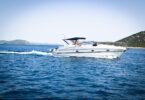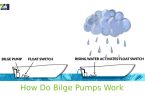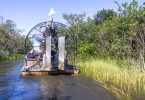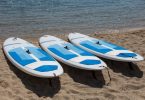Kayaking is an awesome way to have fun and still keep fit. It helps you unwind and get away from stress by locating a perfect spot that is right for you to either fish, exercise, sight-see.
If you just want to have fun, you can choose to paddle in the lake, ocean, canal or river. It provides your abs and arms with the right amount of workouts.
The question is, what are the best kayaks for beginners, what are those factors to look out for and the features to consider before buying a kayak?
What Are the Best Kayaks for Beginners – Buying Guide
It’s pretty easy to get the right kayak once you consider breaking the features into the following steps.
1. Based on Type
a) Sit-on-top kayaks
How do kayaks with the sit-on-top position work?
- Openings at the top are there to allow water splash out of the kayak
- More stable and wider than the sit-in kayak when compared
- Much easier to maintain a balance compared to the comfort you get from the sit-in kayak
- Perfectly suitable for kids and beginners
- Great for flowing rivers and still waters
- You can easily get back on board once you fall off
Why do sit on top kayak have holes? The holes are specifically designed to drain off the water that results from paddling.
b) Sit-in Kayaks
These are the features of a sit-in kayak.
- It’s has a capsule that keeps your bottom dry.
- Come with a cover/ skirt which is placed around the waist to help keep water off.
- Suitable for cold weather because it’s built to keep you warm and dry.
- They are usually very narrow and much longer than the usual sit-on-top kayak.
- It helps you get around, and it faster in open lakes, bays, etc.
- You can brace your knees for powerful paddles and strokes.
2. Kayak Material
Considering the quality of materials and how much this will cost you is also essential –
- Aluminum and plastic paddles are cheaper but are heavy; the weight will affect your performance.
- Sit in touring kayak are more expensive than sit on top recreational kayak.
- Paddle and kayaks that are made from carbon fiber are lighter and easy to use; these features make them more expensive.
- For inflatable kayaks, the hull is typically constructed from high-density PVC and Vinyle materials.
3. Use
The sit-on-top and the sit-in kayaks can be used perfectly for:
- Fishing
- Touring
- Racing
- Recreation
a) Recreational Kayaks
Recreational kayaks are best for:
- Lakes, open coastal waters, and rivers
- Suitable for children and beginners
- Relatively easy to steer and offers more comfort
- They are recommended for fun
b) Touring Kayaks
A touring kayak has the following features:
- Recommended for sightseeing and fitness
- It offers you a reliable way to explore lakes, waterways, and rivers
- You can easily get access to secluded places that has no cross trails or roads
- It comes with a storage space that can be used for food and other camping supplies
c) Fishing Kayaks
A fishing kayak:
- Gives quick and easy access to deep waters
- Gives an affordable option when it comes to maintenance
- Is lightweight, easy to use, and durable
4. Shape
It is important to go for kayaks that suit the activity and your level of experience.
- Length – kayaks with shorter lengths are more suitable and easy to control. Though kayaks that are bit longer tend to be faster.
- Width- slim kayaks are faster, although they are less stable. Wide kayaks offer more stability but are a bit difficult to steer.
5. Weight Capacity
Kayaks that are light in weight are easier and faster to transport and maneuver. One of the important factors to bear in mind is that kayaks’ capacity varies just as their sizes vary. The capacity covers the bodyweight of the paddler and the weight of additional gears added along in the kayak, including fishing tackles, gear, and coolers.
6. Hull Type
The hull design is yet another factor to consider. The hull has a shape that’s similar to the bottom of a boat. And can influence your performance and stability. There are two types of stability:
- The primary stability which is also known as the initial stability; it explains how stable the kayak is once you get into the boat.
- The secondary stability explains how stable the kayak is once you start paddling. This reduces your chance of rolling over into the water.
Let’s take a look at the types of hulls:
- V-shaped that cuts through water in a straighter line and is less stable.
- Flat – has enough contact with the water body, making it easier and more stable to turn.
- A blend – this explains a v-shaped at the end of both side and a flat in the middle
- Chine: explains how the bottom of the boat comes in contact with the sides; this can either happens as a softly rounded chine or as a harder chine.
- Rocker – explain the number of curves that occur from the rare part to the front of the kayak.
- Rockers with more curves are slow but easier to maneuver.
- If the rocker has less curve, it is faster but tends to be difficult to maneuver.
7. Depth
Kayaks with deeper hulls give more room for tall kayakers and offer more storage for gear and other items.
8. Length
Narrow and long kayaks are:
- Not easily maneuvered, but are faster
- Less suitable compared to shorter kayak
- Suitable for straight distances
- Suitable for large and open spaces
- Perfect when used on seas
9. Width
Wide and short kayaks are:
- Easy and stable to maneuver
- A bit slower than the narrow and long kayaks
- Good for winding, narrow, and fast-flowing canals and rivers
- Suitable for kayaking in white water rapids
10. Seats
- Backrest – some kayaks are designed with inbuilt back support, which eases fatigue and gives more comfort.
11. Paddle
Using the right paddle will increase your experience. To get the best paddle, you will need to consider the following:
- The strength of your arms and your trip length
- The paddling style that best suits you
a) Your Strength and Trip Length
Each time you paddle, your arm, stomach, and back muscles are used, this is why it’s important to go for:
- Light paddles that won’t exhaust the strength of your arms
- Heavy paddles can only slow you down
b) Adjustable Paddles
- Go for paddles that can be shortened, lengthened, and rotated easily to suit the condition at hand
- It makes it comfortable, easier for anyone to take a turn on the kayak
- It can be split into two different parts to make transportation easier
12. Seat
Go for a kayak with seats that are more ergonomically suited, adjustable, and more padded. They offer the best level of comfort that will be worth your investment.
13. Cockpit Size
Kayaks that are built with small cockpits offer you more protection and control when you encounter rough conditions. Although it’s easier to get in and out of kayaks that are designed with large cockpit.
14. Hatches
These spaces are specifically meant for interior storage. Touring kayaks are usually built with two hatches while few recreational boats and day touring boats have only one.








Leave a Comment